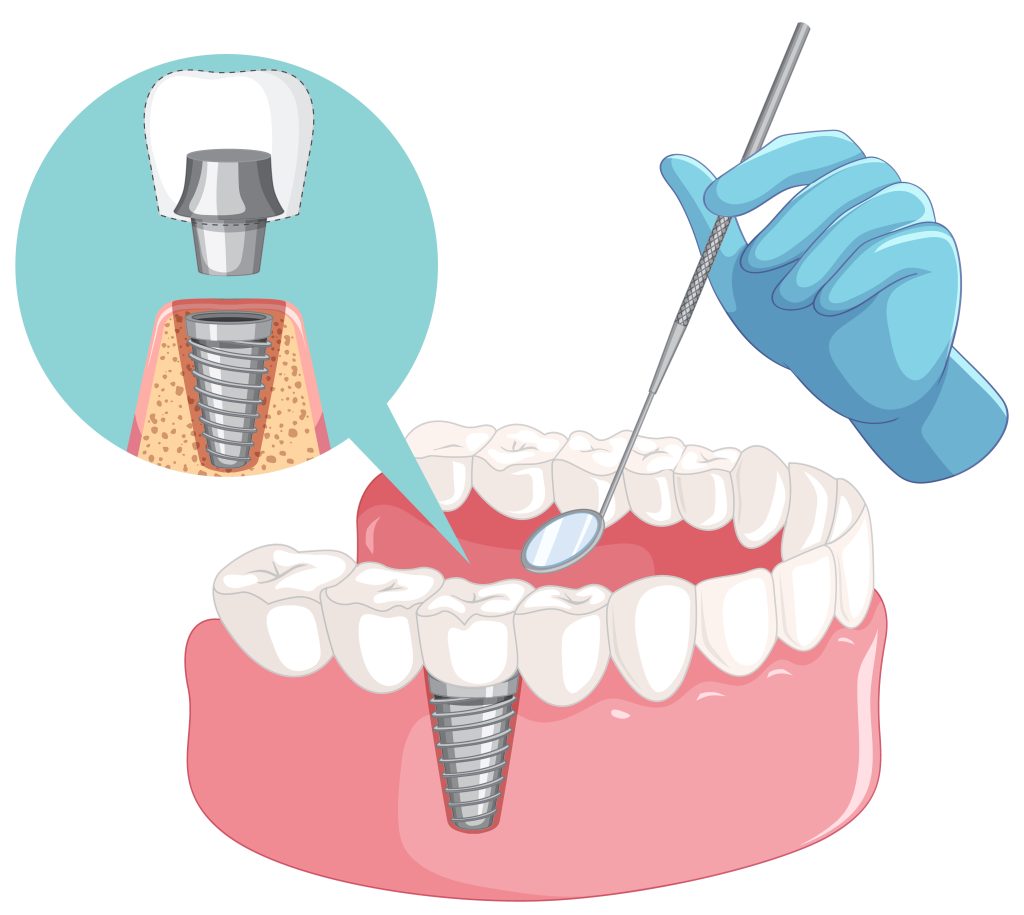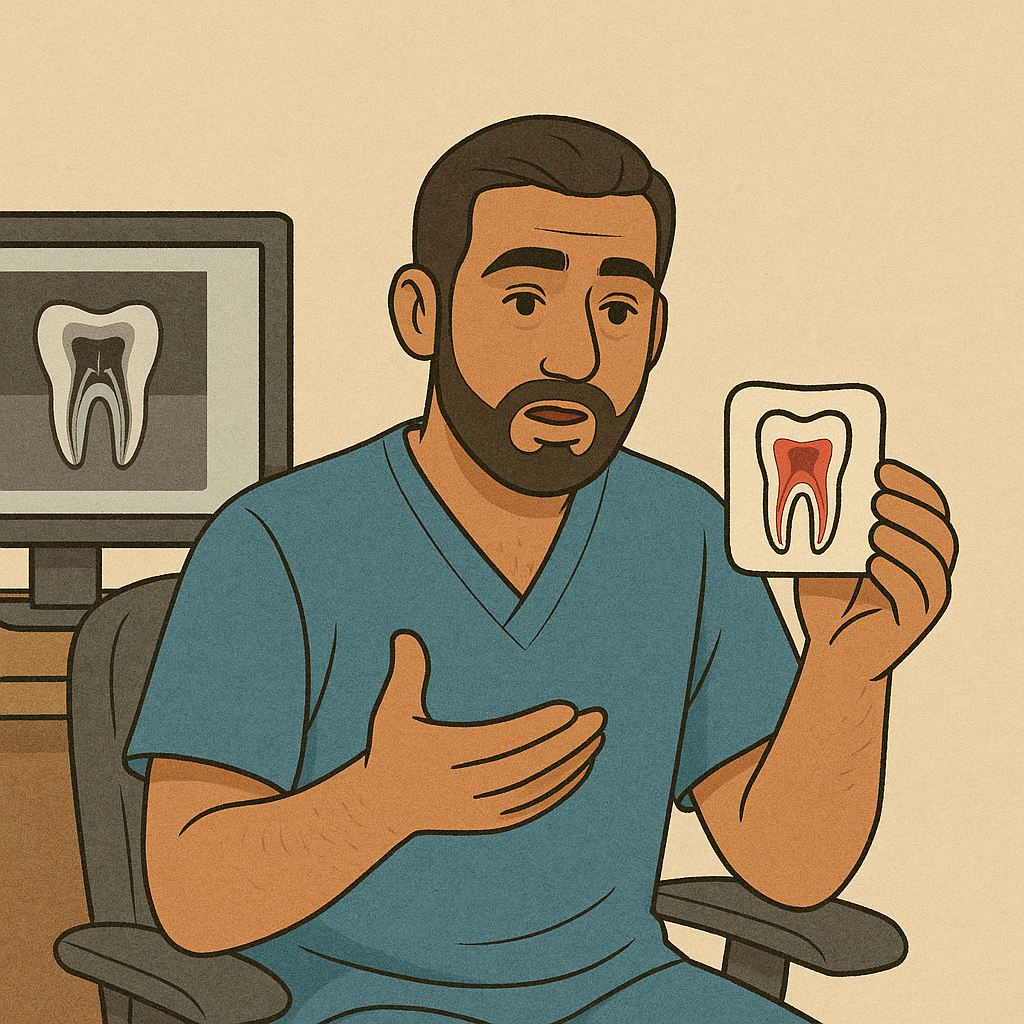Understanding When, Why, and How We Remove Impacted Wisdom Teeth
At TRUE SMILE Dental Centre, many of our patients arrive unsure whether their discomfort is “normal” or something more serious. They describe pressure in the back of the jaw, difficulty opening their mouth, recurring gum infections, or pain radiating toward the ear. These symptoms often trace back to impacted or partially erupted third molars—commonly known as wisdom teeth.
When these teeth are positioned unfavourably or cannot emerge fully, they may begin to affect neighbouring teeth, jawbone, nerves, and soft tissue. That’s when a surgical extraction becomes not only necessary, but protective of your future oral health.
Surgical wisdom tooth removal is not a rushed or routine procedure. It’s a carefully planned medical intervention—one that prioritises safety, comfort, and long-term wellbeing. And that’s exactly how we approach it at our clinic on Al Reem Island in Abu Dhabi.
What Is a Surgical Wisdom Tooth Extraction?
Not all wisdom tooth extractions are the same. When a tooth is deeply impacted, trapped within bone, or growing at an angle that endangers adjacent structures, surgical intervention is required.
A surgical wisdom tooth extraction involves:
- Creating a flap in the gum tissue
- Accessing and possibly removing bone overlying the tooth
- Sectioning the tooth into smaller parts
- Gently extracting each part
- Cleaning the site thoroughly
- Placing stitches to assist healing
This differs from a simple extraction, where the tooth is fully erupted and can be removed without disturbing surrounding tissue or bone.
The decision to remove a wisdom tooth surgically depends on several factors, including its position, the presence of infection or decay, available space in the jaw, and proximity to nerves or sinuses.
Why We Recommend Removing Problematic Wisdom Teeth
As a dentist, I don’t advise extraction lightly. But there are clear clinical situations where removing a wisdom tooth is the safest option:
- Impacted Teeth: When a wisdom tooth fails to emerge or does so at an angle, it can push against adjacent teeth or become trapped in the jawbone.
- Recurrent Infections: Partially erupted teeth can create gum flaps (pericoronal tissue) that trap bacteria and food, leading to recurring inflammation or abscesses.
- Tooth Decay or Gum Disease: The back of the mouth is difficult to clean thoroughly, increasing the risk of cavities and periodontal pockets.
- Crowding or Orthodontic Issues: Wisdom teeth can shift adjacent teeth out of alignment, particularly in younger adults post-braces.
- Cyst Formation: In rare cases, impacted teeth can lead to cysts or other pathological changes in the jawbone.
In these scenarios, removing the tooth surgically prevents escalation into more serious complications—and preserves the health of neighbouring teeth.
Common Symptoms That May Point to a Problem
Patients often live with symptoms for months before seeking help. Here are the warning signs we take seriously:
- Persistent or throbbing pain in the back of the mouth
- Red, swollen, or bleeding gums behind the molars
- Jaw stiffness or difficulty fully opening the mouth
- Foul taste or bad breath despite good hygiene
- Recurrent swelling near the lower jaw or cheek
- Pain when chewing, especially in the back molars
- Sudden crowding or shifting of front teeth
- Visible pus or signs of infection
If you’re experiencing any of these, it may be time to evaluate whether wisdom tooth extraction in Abu Dhabi is the right next step.
How We Plan Your Surgical Extraction
We don’t rush into surgery. Every case begins with an in-depth assessment to ensure the procedure is truly necessary and that we can execute it with precision.
1. Medical & Dental History
We ask about previous extractions, jaw pain, medication use, systemic conditions (like diabetes or bleeding disorders), and any experience with sedation or anaesthesia. This helps us design the safest surgical plan.
2. Clinical Examination
We check for visible signs of impaction, swelling, or gum inflammation. We palpate the jaw and lymph nodes, assess mouth opening, and look for occlusal contact issues.
3. Digital Imaging
We use digital X-rays and CBCT (cone beam computed tomography) scans to assess:
- Root shape and length
- Proximity to the inferior alveolar nerve
- Bone density and position
- Sinus involvement (in upper teeth)
- Overall surgical complexity
This step is especially important when calculating the wisdom tooth extraction cost in Abu Dhabi since imaging guides both planning and pricing.
What to Expect During Surgical Wisdom Tooth Removal
At TRUE SMILE, surgical procedures are performed in a sterile, private setting using the most advanced technology available. Here’s how it works:
Anaesthesia
We offer local anaesthesia, conscious sedation, or general anaesthesia depending on the patient’s anxiety level, case complexity, and medical background. We’ll always discuss options in advance.
Surgical Procedure
Once numb or sedated, the following steps are taken:
- A small incision is made to expose the tooth and surrounding bone
- Bone may be gently removed to reach the tooth
- The tooth is sectioned if needed, to allow for easier removal
- The area is irrigated and cleaned
- Sutures are placed to promote clotting and reduce healing time
The total procedure typically lasts 30–60 minutes per tooth, depending on the level of impaction.
Aftercare and Recovery
We provide detailed post-op instructions and remain available to support you through recovery. Most patients heal smoothly with minimal downtime.
What to expect:
- First 24 hours: Swelling, minor bleeding, and mild discomfort. Stick to soft foods, avoid smoking or using straws, and rest with your head elevated.
- Days 2–3: Swelling may peak. Pain is usually controlled with over-the-counter medication or a prescribed analgesic.
- Week 1: Stitches (if non-dissolving) are removed. Most normal activity can resume.
- Week 2–4: Full soft tissue recovery is expected.
- Months 2–6: Bone fills in the socket. We’ll schedule a follow-up to ensure healing is complete.
Understanding the Cost of Surgical Tooth Extraction in Abu Dhabi
We believe patients deserve transparency when it comes to the cost of care. The tooth extraction cost in Abu Dhabi can vary widely depending on the complexity of the case and the level of sedation used.
At TRUE SMILE, a typical surgical wisdom tooth extraction price includes:
- Clinical examination
- Digital X-rays or CBCT
- Surgeon’s time and materials
- Sedation or anaesthesia (if selected)
Post-op medications and follow-up
Who Typically Needs Surgical Wisdom Tooth Removal?
You may benefit from seeing us for wisdom teeth removal in Abu Dhabi if:
- You are aged 16–35 with incomplete molar eruption
- You have repeated infections in the back of the jaw
- Your orthodontist has flagged wisdom teeth as a risk
- You experience pain when chewing or opening wide
- X-rays show roots near the mandibular nerve
- Your molars are angled horizontally or mesially
- You want a second opinion before complications begin
We see both residents and expats seeking wisdom tooth removal cost Abu Dhabi estimates and trusted surgical planning. Many are referred by orthodontists or general dentists. Some are simply looking for peace of mind.
Our Surgical Approach at TRUE SMILE
We are proud to offer:
- Highly experienced oral surgeons with thousands of extractions performed
- Digital planning tools for optimal outcomes
- Multilingual care team (English, Arabic, Russian, Portuguese)
- On-site imaging for faster diagnosis and reduced visits
- Sterile surgical suites and private recovery spaces
- Emphasis on long-term oral stability, not just short-term relief
We also work closely with anxious patients to provide supportive, calming environments. Whether you’re a first-timer or have had prior surgical experiences elsewhere, you’ll be cared for like family.




















